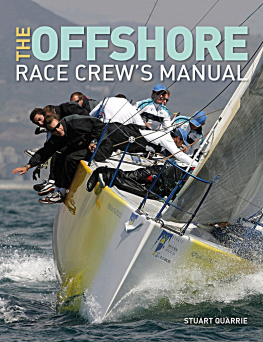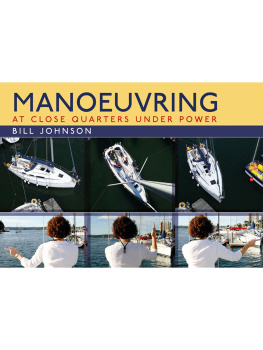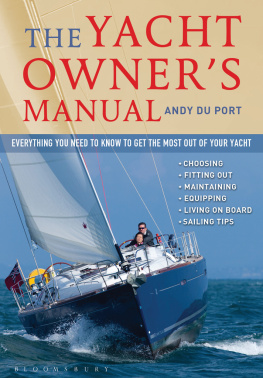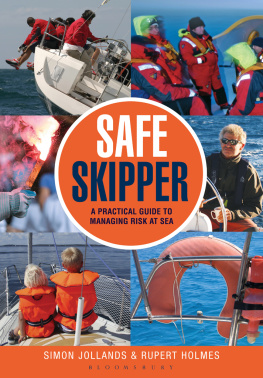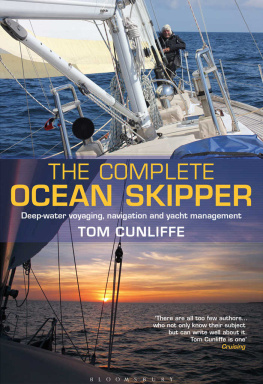
Published by Adlard Coles Nautical
an imprint of Bloomsbury Publishing Plc
50 Bedford Square, London WC1B 3DP
www.adlardcoles.com
This electronic edition published in 2013 by Bloomsbury Publishing Plc
Copyright 1994 Stuart Quarrie
First published by Waterline Books 1994
Reprinted by Adlard Coles Nautical 2002, 2006, 2013
ePub ISBN 978-1-4081-5921-7
All rights reserved
You may not copy, distribute, transmit, reproduce or otherwisemake available this publication (or any part of it) in any form, or by any means(including without limitation electronic, digital, optical, mechanical, photocopying,printing, recording or otherwise), without the prior written permission of thepublisher. Any person who does any unauthorised act in relation to this publicationmay be liable to criminal prosecution and civil claims for damages
The right of the author to be identified as the author of this work has been asserted by him in accordance with the Copyright, Designs and Patents Act, 1988.
A CIP catalogue record for this book is available from the British Library.
Photographs courtesy of Yachting World with exception of:
Pages 148/149: courtesy of Henri Lloyd Ltd
Illustrations by Peter Coles
Note: while all reasonable care has been taken in the publication of this book, the publisher takes no responsibility for the use of the methods or products described in the book.
Visit www.bloomsbury.com to find out more about our authors and their books.
You will find extracts, author interviews, author events and you can sign up for newsletters to be the first to hear about our latest releases and special offers

This is a book written by someone who genuinely enjoys offshore racing and who has sailed on hundreds of different yachts at all levels and in most types of race. It is intended to help crew members of either sex, and at any age and level of experience. A large part of the book concentrates on actual crew work and manoeuvres but there are also sections on watch systems, victuals, heavy weather, sail trim and setting-up the yacht for racing.
Offshore crewing, whether during a race or while cruising is great fun, but can be physically demanding and takes a high degree of commitment from participants. Racing in particular requires the entire the crew to have a common aim and for every member to put maximum effort into winning. Sailing is sometimes lovely, spinnaker reaching in a flat sea and sunny conditions, or it can be really bloody, as when going to windward in freezing conditions and half a gale but it is always worth the experience. The sense of personal achievement after finishing a race or passage and knowing that you have contributed as much as possible to the running of the yacht is a great feeling. Most of the preparation and manoeuvres are simple in themselves but it is important to understand what is required and then how to execute each to a high level of perfection. Trying to reinvent the wheel each time a new situation is encountered is not very efficient and does not win races. One way to learn is to listen to others who just might have been in the same situation before.
I enjoy coaching at all levels and this book is merely an extension of coaching afloat. My ideas evolved as my experience grows; sailing with different people allows me to see differing ways of doing the same things. There is rarely a right way to do something, it is merely that some methods seem to be generally more efficient than others. I do not pretend that this is a bible for everyone to follow. I shall be happy enough if every reader either learns something new or even just uses my experience to rethink how he or she goes about racing.
Stuart Quarrie 1994
Lymington
England

Chapter 1

In this section we shall look at the detail of each manoeuvre; at who does what and in what order, the priorities and where potential problems can occur. Whatever type of manoeuvre you are about to attempt, the most important thing is to be organised. The whole crew needs to know what is required of them and ideally you will have practised the manoeuvre in a non-racing environment before attempting it in a stressful situation. Few manoeuvres are really complicated but most can be ruined if the basics are not carried out efficiently. If all crew members understand what is going to happen and how their own job can affect others, then life will be easier for everyone.

This is a manoeuvre which happens so frequently that it is often ignored in any practise sessions, being thought of as too basic to need comment. One should remember that because it is executed so often during a race, small gains on each tack can have a significant effect on the overall performance. Also, in many cases you will be tacking at critical times, often with another yacht close by and when any mistake, however small, can leave you in dirty air and force you to tack away again.
The principle of a good tack is simple enough. The yacht should be sailing at maximum speed until you actually commence the tack. The tack itself should happen with the minimum loss of speed and you should then get back up to your optimum speed as quickly as possible. In practice of course it is not quite as easy as it sounds.
When Ready About is called, those crew members who must move from the side-deck should do so in an agreed order. Those who are not needed to prepare for the tack should stay sitting-out and if possible should hike out even harder than before to keep the yacht on her feet. In practice this means that the person letting off the old sheet must move into the cockpit, ensure the new sheet is on the winch with a handle in and that the old sheet is uncleated, winch handle out and ready to let fly. If you have runners, these must also be set up by another crewman. At the same time, the mainsheet trimmer needs to prepare by ensuring the traveller controls are set for tacking and take the sheet in hand.
Each yacht has a different system of calling to advise when the crew is ready to tack. This can either be done on a positive call from each relevant crewman that he is ready or on a negative response if there is a problem. Although both systems have their pros and cons, I tend to favour the latter negative response system, especially for crews who sail together on a regular basis.

Photo 1.1 On the call Ready About, one crew member leaves the rail to prepare the working winch for the tack by removing the handle and uncleating the sheet. The rest stay on the rail.
Once the crew are ready, it is up to the helmsman to time the tack itself. He should ensure that the speed is good and if possible find a relatively flat patch of water to tack into, or if that is not feasible at least to ensure that he does not tack straight into the face of an oncoming wave.
Next page
